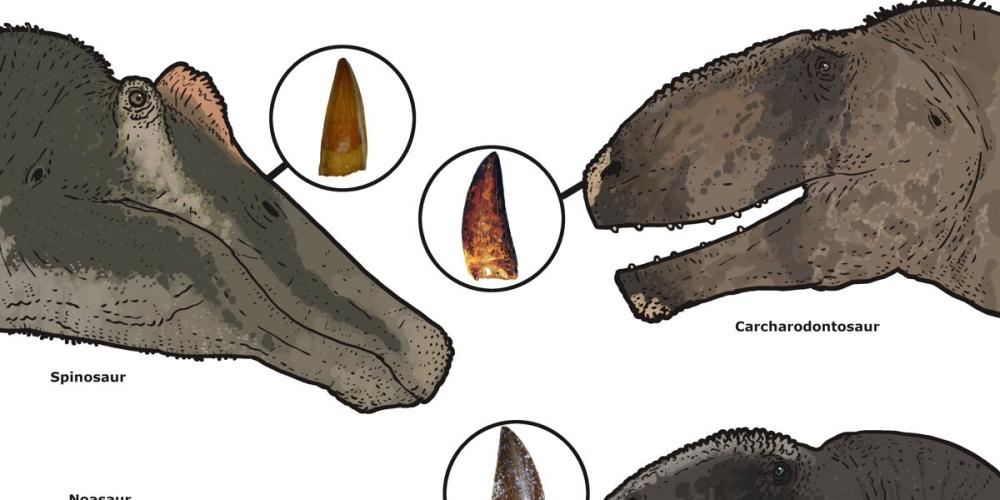
An international team of palaeontologists from Utrecht University, the Natural History Museum in London, Instituto Miguel Lillo in Tucumán, Argentina, the Palaeontological Museum in Munich, and the Vrije Universiteit Brussel employed a novel AI method to assess the diversity of theropod (carnivorous) dinosaur species from the renowned Kem Kem beds in Morocco. By integrating traditional phylogenetic and statistical techniques with machine learning to identify isolated teeth, they uncovered a species previously not identified in this region.
The Kem Kem is a fossil-rich site from the Early Cretaceous (about 100 million years ago) on the border between Morocco and Algeria. It is one of the few places in the world where a relatively complete river-bound ecosystem from the Early Cretaceous is preserved. In addition to a plethora of theropods, the area was also home to sauropod (long-necked) dinosaurs and another type of herbivore. "Fossilised remains in the deposits are often only teeth. Very little else of the animals is preserved, so we often have to guess which dinosaur left behind these teeth," explains Femke Holwerda from Utrecht University. Among the specimens examined were teeth from the iconic Spinosaurus and Carcharodontosaurus, known from the Jurassic film series. In addition to these easily recognisable teeth, several 'mystery teeth' were analysed, previously identified as belonging to a type of raptor, the dromaeosaurids.
"We allowed a machine learning algorithm to process characteristics of teeth from various dinosaur species to subsequently assist with distinguishing species in the set of examined teeth," explains Simon Wills from the Natural History Museum. "We then discovered that the two mysterious tooth morphotypes did not belong to raptor-like dinosaurs but rather to Abelisauridae (a distant relative of Tyrannosaurus) and a group called Noasauridae, which are very rare in Morocco," continues Simon Wills. Noasaurids are peculiar small theropods with long necks, and only a few isolated, presumably noasaurid bones are known from the Kem Kem. "These teeth have been lying in museum collections for decades, but this new combination of techniques has breathed new life into them. It's quite fascinating that there were also quite rare noasaurids walking around in the Kem Kem. Traditional methods would have overlooked isolated findings of teeth from these small theropods," adds Femke Holwerda. This demonstrates that the new combination of methods is much more precise. "The results are also very promising for biodiversity research into other dinosaurs, such as sauropods (long-necked dinosaurs), which are even rarer in the Kem Kem beds," says Koen Stein from the Free University of Brussels. "AI is now ubiquitous. It makes sense that we also use it in palaeontology and the natural sciences in general. It proves to be a useful tool to refine our research methods and ultimately get a better understanding of biodiversity in the past," concludes Koen Stein.
Reference:
Christophe Hendrickx, Thomas H. Trapman, Simon Wills, Femke M. Holwerda, Koen H.W. Stein, Oliver W.M. Rauhut, Roland R. Melzer, Jeroen van Woensel, and Jelle W.F. Reumer, ‘A combined approach to identify isolated theropod teeth from the Cenomanian Kem Kem group of Morocco: cladistic, discriminant, and machine learning analyses’, Journal of Vertebrate Paleontology, DOI: https://doi.org/10.1080/02724634.2024.2311791